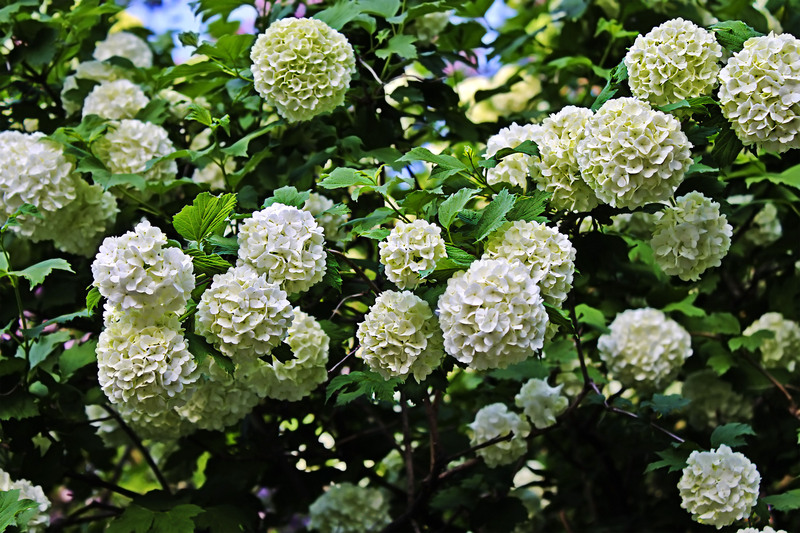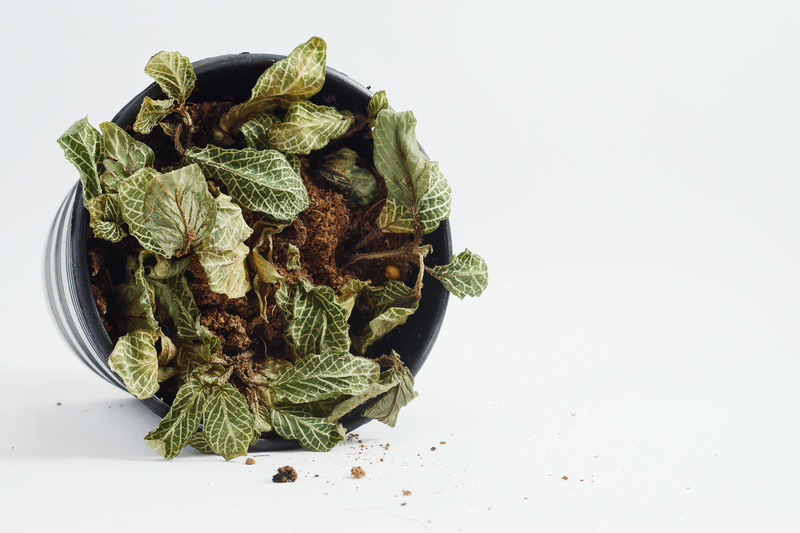Practical Tips for Successful Container Gardening
Posted on 15/09/2025
Practical Tips for Successful Container Gardening
Are you limited by space but still dream of a lush, productive garden? Container gardening might be the perfect solution for you. With the right knowledge and a little planning, anyone can cultivate thriving plants in pots, tubs, or even repurposed containers. Read on for expert advice and practical tips for successful container gardening that will turn your patio, balcony, or windowsill into a botanical haven!
Why Choose Container Gardening?
Container gardening has surged in popularity in recent years, and for good reason. Whether you're an urban dweller with limited outdoor space or a seasoned gardener seeking to expand your plant collection, gardening in containers is versatile and accessible. Here are some key advantages:
- Space efficiency: Grow plants even in tight spaces like balconies and patios.
- Mobility: Move your plants to capture more sunlight or shield them from harsh weather.
- Control: Maintain better control over soil quality, moisture, and environmental conditions.
- Versatility: Perfect for ornamental blooms, vegetables, herbs, and even dwarf fruit trees.

Getting Started: Essential Supplies for Container Gardening
Before diving into the world of container gardens, gather these essential tools and materials:
- Appropriate containers: Pots, planters, window boxes, repurposed buckets - the options are endless!
- High-quality potting mix: Avoid using garden soil directly, as it may harbor pests and doesn't drain well.
- Plants: Choose varieties suited for container growth and your local climate.
- Fertilizer and mulch: Ensure plants get proper nutrients and moisture retention.
- Watering can or hose: Consistent watering is vital for healthy container plants.
- Tools: Trowel, gloves, and scissors or pruning shears for maintenance.
Choosing the Right Containers
The success of container gardening often depends on the containers you select. Here's what to consider for optimum plant health:
Container Material
- Ceramic and Clay: Excellent for breathability but can dry out quickly.
- Plastic: Lightweight, inexpensive, and retains moisture well.
- Wood: Attractive and good insulators but may eventually rot without line or treatment.
- Metal: Durable but may overheat in sunny locations.
Container Size and Drainage
Size matters! Select containers large enough for the plant's root system. The bigger the better -- larger containers retain moisture longer and allow more space for root growth. It's also essential to ensure good drainage; always pick pots with drainage holes at the bottom to prevent waterlogging.
Picking the Perfect Potting Mix
The right soil is essential in container plant care. Avoid garden soil, which can be too dense and prone to compaction. Instead, choose a high-quality potting mix tailored for containers. These mixes offer:
- Proper aeration: Ensures roots get oxygen and don't suffocate.
- Moisture retention: Holds water but drains excess to prevent rot.
- Added nutrients: Many mixes come pre-fertilized to jumpstart plant growth.
For organic container gardening, look for mixes with compost, coconut coir, or peat moss, and add worm castings or slow-release organic fertilizers for sustained nutrition.
How to Choose the Best Plants for Containers
Not all plants thrive in pots. Success with container gardening starts with selecting plants suited to your region and growing conditions. Some top choices include:
- Herbs: Basil, parsley, thyme, mint, and oregano flourish in containers.
- Vegetables: Tomatoes, peppers, lettuce, spinach, and radishes are compact and productive.
- Flowers: Petunias, geraniums, marigolds, pansies, and impatiens add color and interest.
- Dwarf fruit trees: With specialized varieties, grow apples, lemons, or figs in large containers.
- Succulents and cacti: Perfect for dry containers with little maintenance.
Pro Tip: Try companion planting by grouping herbs or vegetables with flowers to boost pollination and attract beneficial insects.
Arranging Plants for a Beautiful, Productive Container Garden
For both visual appeal and optimal growth, follow the classic "Thriller, Filler, Spiller" approach:
- Thriller: Tall, eye-catching plants (like ornamental grasses or upright flowers).
- Filler: Mid-sized plants to build volume and balance (such as bushy herbs or compact vegetables).
- Spiller: Trailing plants that drape over the edges (like ivy, nasturtiums, or sweet potato vine).
Pay attention to each plant's sunlight, water, and space needs -- group plants with similar requirements for the healthiest growth.
Watering Wisely: Key to Thriving Container Plants
Consistent watering is vital for all types of container gardens. Due to increased exposure, containers dry out far faster than the ground. Here's how to keep your plants happy:
- Inspect regularly: Check soil moisture daily, especially in summer.
- Water deeply: Water until you see liquid draining from the base of the pot to encourage deep roots.
- Morning is best: Water early in the day so plants absorb moisture before the sun heats up.
- Self-watering containers: Consider these for ease and consistency, especially with busy schedules.
- Mulch: Top the soil with shredded bark, straw, or pebbles to slow evaporation.
Avoid shallow, frequent watering which only wets the soil surface and weakens plants.
Fertilizing Your Container Garden
As nutrients are quickly depleted in containers, regular fertilizing is crucial for healthy growth and abundant blooms or harvests. Here's what you should consider:
- Slow-release fertilizers: Mix granules into your potting mix for steady nutrition.
- Liquid fertilizers: Apply every 2-4 weeks as a supplement, especially for heavy feeders like tomatoes.
- Organic options: Compost tea, fish emulsion, or seaweed extract are gentle and effective.
- Follow label instructions: It's possible to over-fertilize; when in doubt, use less.
Managing Pests and Diseases in Container Gardening
Container plants can still attract pests and diseases. Fortunately, pots offer more control, but vigilance is key for successful container gardening:
- Inspect leaves and stems: Watch for yellowing, spots, or holes.
- Remove debris: Keep containers free from fallen leaves or wilted blossoms where pests may hide.
- Good airflow: Leave space between pots to reduce humidity and disease risk.
- Natural remedies: Use neem oil, insecticidal soap, or handpicking for minor infestations.
- Repot and replace: If a plant is overrun with disease, isolate or remove it to save others.
Seasonal Care and Overwintering
Seasonal changes present unique challenges and opportunities for container gardens. Here's how to keep your plants alive and healthy all year:
Summer
- Shade sensitive plants: Move containers out of harsh afternoon sun.
- Increase watering: Hot weather means more evaporation.
- Deadhead flowers: Regularly remove spent blooms for continuous color.
Fall
- Transition containers: Replace summer annuals with cool-season vegetables or fall blooms like chrysanthemums.
- Protect from frost: Move pots indoors or closer to the house during sudden temperature drops.
Winter
- Bring sensitive plants indoors: Many herbs or tropicals can be overwintered on sunny windowsills.
- Insulate pots: Group containers and wrap with bubble wrap or burlap to prevent soil from freezing.
- Monitor watering: Cut back but don't let soil dry out completely.
Spring
- Refresh soil: Top up or replace mix annually for best results.
- Fertilize and prune: Give plants a boost as they break dormancy.
- Check for pests: Spring is prime time for infestations.
Container Gardening Design Ideas
Getting creative with your container garden design can significantly boost your outdoor (or indoor) aesthetics. Try these inspiring ideas:
- Edible arrangements: Combine herbs with trailing strawberries or edible flowers for form and function.
- Color themes: Group blues and purples or fiery oranges and reds for a striking visual impact.
- Vertical gardening: Use shelves, hanging baskets, or wall planters for a lush, layered look.
- Recycled containers: Repurpose old teapots, boots, or crates for a unique, eco-friendly twist.
Troubleshooting Common Container Garden Problems
Even experienced gardeners face setbacks. Here are solutions to common challenges in container gardening:
- Wilting despite watering: Check for root rot from poor drainage; repot with fresh soil and ensure holes aren't blocked.
- Yellowing leaves: Could indicate over-watering, nutrient deficiency, or pests. Adjust care routines as needed.
- Underperforming plants: Try a larger container and ensure the mix isn't exhausted of nutrients.
- Leggy growth: Increase exposure to sunlight or provide supplemental grow lights indoors.

Expert Tips for More Productive Container Gardens
- Rotate crops annually: Prevent disease build-up by switching plant types in each container every season.
- Specialize containers: Dedicate one pot per plant for veggies like tomatoes to improve air flow and minimize disease.
- Group for impact: Cluster pots of various sizes and heights for a full, cohesive display.
- Start with healthy plants: Buy from reputable nurseries and inspect roots before planting.
- Document your garden: Keep a garden journal to record what works and what doesn't each season.
Conclusion: Transform Your Space with Container Gardening
Whether you're cultivating fresh herbs for your kitchen, vibrant blooms for curb appeal, or a bounty of homegrown vegetables, successful container gardening is within reach for everyone. By selecting the right containers, using quality soil, choosing appropriate plants, and following these practical tips for container gardening, you'll enjoy a flourishing portable garden no matter your circumstances.
Get started today! With creativity, care, and a little horticultural know-how, you can transform any space into a green oasis. Happy gardening!

